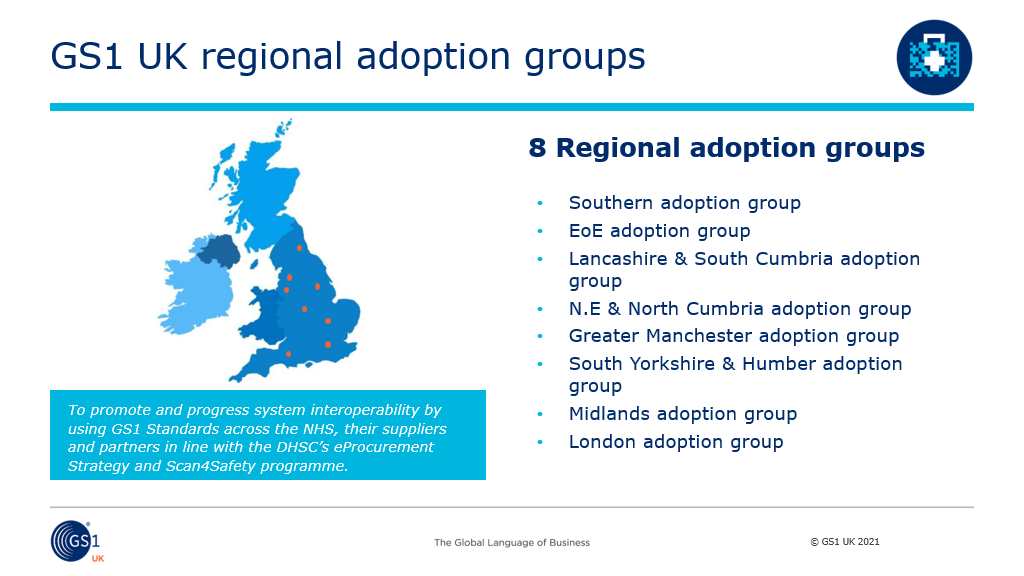Scan4Safety is based on the adoption of GS1 standards for the unique identification of every person, every product, and every place known as the three core enablers. Compliance is achieved through the successful implementation of each of these core enablers to deliver improvements to patient safety.

Ten steps to getting started
1. Appoint a Scan4Safety lead
Once approved, create a Scan4Safety project group and nominate a board level senior responsible officer (SRO) and clinical lead.
2. Choose your use cases
What is the biggest problem for the trust? Identify the trust’s desired use case(s) e.g. inventory management, purchase-to-pay, product recall, asset management etc.
3. Stakeholder engagement
Engage with necessary trust departments and teams to align on project and establish the trust Scan4Safety group.
4. Conduct a status assessment
Develop a current state assessment and high-level GS1 and PEPPOL adoption plan to review current systems, processes, and current data capture points.
5. Plan your business case
Complete and submit a Scan4Safety business case to the trust board.
6. Establish a communication plan
Develop a full communication plan to internal stakeholders and suppliers, to outline a strategy to communicate the objectives and outcomes from the project.
7. Review tender documents to include GS1 standards
Update your tender documents to include compliance clauses in favour of those suppliers that are using GS1 standards, and solution providers that are GS1 UK Approved.
You can find a partner that has a GS1 UK-Approved product or solution via the GS1 UK partner finder at https://www.gs1uk.org/partner-finder.
8. Implement the three core enablers
Begin project implementation, starting with the three core enablers: GSRNs* for person identification, GTINs* for product identification, and GLNs* for location identification.
*Further information on the GS1 Keys can be found here.
9. Check patient wristbands for compliance
Verify your patient wristband with GS1 UK to ensure it is compliant with the NHS Digital standard DCB1077.
Further information about DCB1077 can be found here.
10. Implement the use case(s)
Begin introducing GS1 standards into the relevant trust use case areas highlighted at step two.
My advice in setting up Scan4Safety at a trust is to start small. And then if you have capacity, get it bigger, but go for the big bangs that will really benefit patients.
Core enablers implementation guides
Contact us to get started
Please get in touch if you are interested in working with the NHS England to promote Scan4Safety or you wish to find out more about implementing scanning at the point of care.
